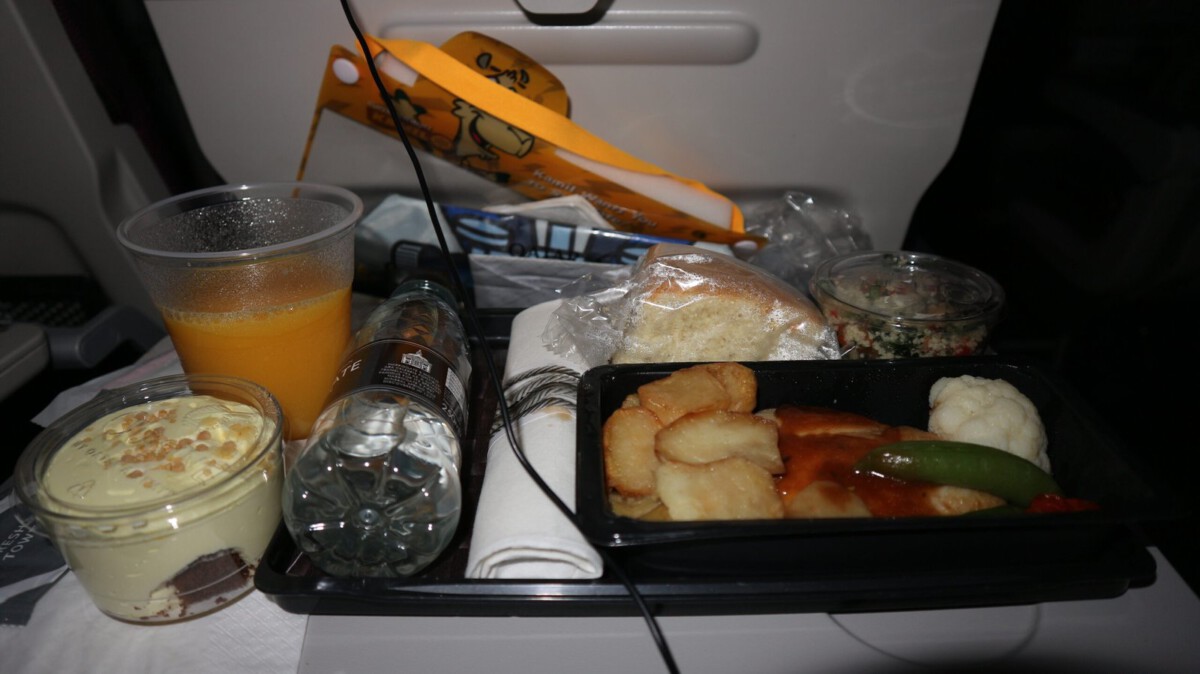The Evolution of In-Flight Meals

Not so long ago, in-flight meals were something many travelers dreaded. The classic image of a bland, rubbery chicken dish or a dry sandwich is one that lingers in the memories of frequent flyers. But times have dramatically changed. Airlines now understand that food is more than just sustenance—it’s a key part of the journey. According to a 2022 International Air Transport Association (IATA) survey, a surprising 70% of travelers say that meal quality strongly influences their choice of airline. This new priority has encouraged airlines to invest in better ingredients, creative recipes, and a more thoughtful approach to what they serve at 35,000 feet. Gone are the days of “just eat it and hope for the best”—passengers today expect and receive meals that rival those found in chic city restaurants.
Celebrity Chef Collaborations

One of the most exciting changes in in-flight dining is the rise of celebrity chef collaborations. Instead of relying solely on catering companies, airlines like Singapore Airlines and Qatar Airways have joined forces with chefs such as Gordon Ramsay and Wolfgang Puck. These culinary stars bring their unique flavors and signature dishes to the skies, transforming meals from a necessity into a highlight of the flight. Passengers might find themselves enjoying a Michelin-starred meal while gliding above the clouds, a luxury once unimaginable. This trend not only elevates the airline’s reputation but also gives travelers a reason to actually look forward to mealtime. The partnership with famous chefs has become a significant selling point, especially for those who see food as a central part of travel.
The Impact of Health Trends

Health and wellness have become major concerns for travelers, and airlines are responding with a wider variety of nutritious options. A Global Wellness Institute report predicts that wellness tourism will hit $919 billion by 2022, and airlines want their menus to reflect this movement. Now, passengers can choose from plant-based, gluten-free, and low-calorie meals designed to suit nearly every diet. These options are not just for those with medical needs—they attract anyone eager to maintain healthy habits even when flying. Airlines are discovering that offering fresh salads, wholesome grains, and nutrient-rich snacks can turn a flying meal into a positive, energizing experience. Being able to eat well in the sky is now expected, not just a pleasant surprise.
The Role of Technology in Dining

Technology has quietly revolutionized the way airline food is prepared, served, and even chosen. Many carriers now let passengers pre-order their favorite meals online, reducing the risk of disappointment and waste. Behind the scenes, advances in food preservation and packaging, as highlighted by a Food and Agriculture Organization (FAO) study, help keep perishable ingredients fresher for longer. This means that the salad you eat on a transatlantic flight may taste almost as fresh as one from a local restaurant. Airlines are investing in new heating and chilling systems that preserve both flavor and safety, and meal tracking systems ensure that special requests—like allergies or religious restrictions—are honored without error. Technology makes it easier for airlines to offer better, tastier, and safer food, making the whole dining experience smoother for everyone.
Sustainability in In-Flight Dining

Sustainability has become more than just a buzzword in the airline industry—it’s a core value. Airlines are making conscious efforts to source ingredients locally, reducing food miles and supporting regional farmers. Eco-friendly packaging is now common, with many airlines ditching plastic for compostable materials. A 2023 Sustainable Food Trust report found that sustainable food sourcing can reduce greenhouse gas emissions by up to 30%, a significant shift in an industry often criticized for its environmental impact. Many passengers notice and appreciate these changes, and some even choose airlines based on their commitment to the planet. Sustainability is shaping not just the food on the plate, but the entire process from farm to fork to flight.
The Influence of Cultural Diversity

Airlines are flying people from every corner of the globe, so it only makes sense that their menus reflect this diversity. Travelers can now sample dishes from faraway lands without ever leaving their seat. For example, Qatar Airways might serve traditional Middle Eastern mezze, while Air France offers elegant French cuisine. This approach does more than just satisfy hunger; it creates a sense of adventure and discovery, offering a taste of the destination before even landing. For many, this cultural touchpoint is a highlight of the journey, sparking curiosity about new flavors and traditions. The embrace of global cuisines also fosters inclusivity, making every passenger feel welcome and valued.
Premium Class Dining Experiences

For those flying in business or first class, in-flight dining has reached new heights—literally and figuratively. Passengers are treated to multi-course meals served on real china, with linen napkins, elegant cutlery, and handpicked wines. According to a 2023 Skytrax report, airlines like Emirates and Etihad have set the gold standard, offering menus that would feel at home in any five-star restaurant. The attention to detail is astonishing: think amuse-bouches, artisan bread, and desserts crafted by top pastry chefs. Service is highly personalized, with flight attendants acting more like restaurant servers than airline staff. These premium experiences make the journey itself as memorable as the destination.
The Future of In-Flight Dining

Looking ahead, the sky’s the limit for what passengers can expect from in-flight dining. Airlines are experimenting with virtual reality (VR) experiences that let travelers “see” the origins of their food or join a chef for a behind-the-scenes tour of the kitchen. Interactive digital menus could soon let you customize every part of your meal, from spice level to portion size. Artificial intelligence is also being used to analyze passenger preferences and predict trends, helping airlines fine-tune their offerings. These innovations promise to make the dining experience not just better, but uniquely personal for every traveler. The next era of airline meals might be even more exciting than we can imagine today.
Feedback and Customer Satisfaction

Airlines increasingly depend on passenger feedback to perfect their culinary offerings. Surveys, online reviews, and real-time in-flight feedback apps give travelers a voice like never before. A 2023 J.D. Power study revealed that 85% of passengers are willing to share their dining experience, a number that shows just how invested travelers have become in their meals. Airlines use this information to tweak recipes, redesign menus, and improve service. Those who listen closely and respond quickly to passenger suggestions often see a boost in loyalty and repeat business. Feedback has become a powerful tool in the ongoing quest to serve the best food in the air.
Special Meals and Personalization

Personalization is at the heart of the new in-flight dining experience. Travelers can request meals that cater to specific dietary, religious, or cultural needs, such as kosher, halal, or vegan options. Airlines are making it easier than ever to make these requests, often allowing passengers to choose their preferences online before their flight. Some airlines even offer menus tailored to children or those with food allergies, ensuring that everyone on board feels included and cared for. This level of attention to individual needs helps create a sense of comfort and belonging, making the journey smoother and more enjoyable for all.
Onboard Beverage Innovations

The transformation of in-flight dining doesn’t stop at the food. Airlines now offer curated beverage menus, with premium wines, craft beers, and signature cocktails designed to complement their meals. Expert sommeliers often select wine pairings, and some airlines even feature locally inspired cocktails or non-alcoholic wellness drinks. These beverage programs are carefully crafted to taste great at altitude, where our sense of taste can change. Passengers can now enjoy a glass of vintage champagne or a refreshing herbal tea as part of their inflight experience, turning a simple meal into a memorable event.
Children’s Gourmet Experiences

Even the youngest travelers are not left out of the gourmet revolution in the skies. Airlines are creating special menus for children, filled with fun shapes, healthy ingredients, and familiar flavors. These menus often include interactive elements, like build-your-own sandwiches or colorfully presented fruits and vegetables. By making mealtime an adventure, airlines hope to keep kids happy, engaged, and well-fed during long journeys. Parents appreciate these thoughtful touches, which can make family travel far less stressful.
Pop-Up and Seasonal Menus

To keep the dining experience fresh and exciting, some airlines are introducing pop-up menus and seasonal specialties. These limited-time offerings often highlight local ingredients or celebrate special occasions, such as holidays or cultural festivals. For example, a flight in December might feature festive treats, while a summer route could showcase fresh berries or a refreshing gazpacho. These rotating menus give frequent flyers something new to look forward to and allow airlines to experiment with bold flavors and creative presentations. Passengers often snap photos of these unique dishes, sharing their experiences and spreading the word about the airline’s culinary creativity.



